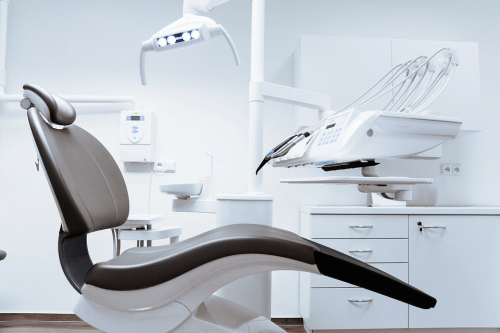A dental hygienist and a dental assistant both work closely with a dentist. However, there is a huge difference between the roles they play in the clinical setting.
Summary Table
| Dental Hygienist | Dental Assistant |
| Educational requirements include either a Bachelor’s or an Associate’s degree in Dental Hygiene | No formal education required in some states; may only require on-the-job training |
|
Required to complete clinical duties and pass a licensure board examination |
May or may not be required to undergo an associate degree program or a dental assisting program |
| Performs direct patient care | Performs tasks related to office management and to the preparatory phase of dental procedures |
| Has fewer limitations in the clinical setting | Has more limitations in the clinical setting |
| Median annual salary is around $72,910 | Median annual salary is around $36,940 |
Definitions

A dental hygienist is a licensed dental professional who specializes in maintaining proper oral hygiene to promote optimal dental health.
A dental assistant is a dental health professional who works under the supervision of a dentist.
Dental Hygienist vs Dental Assistant
While they are both an essential part of a dental team, there is a big difference between a dental hygienist and a dental assistant.
Educational Requirements
As compared to a dental assistant, a dental hygienist has stricter educational requirements. Dental hygienists are licensed professionals who are required to complete either a Bachelor’s or an Associate’s degree in Dental Hygiene from a reputable university.
After graduation, these professionals can only practice their degree after clinical completion and after passing the licensure board examination – usually a combination of written and oral exams.
The pathway to becoming a dental assistant is simpler as it does not always require formal education, depending on state regulations.
In most states, completing on-the-job training is enough to qualify as a dental assistant. However, there are some states that require aspirants to complete an Associate’s degree program or a dental assisting program, which takes around one year.
Scope of Work
Between the two, a dental hygienist’s scope of work is wider and more complex as most of their tasks involve direct patient care. While the practice varies depending on the state, a dental hygienist mainly specializes in promoting oral health by performing state-regulated tasks.
This usually includes polishing teeth, taking dental x-rays, removing plaque and tartar, applying sealants, and using other tools and equipment for simple procedures.
A dental assistant, by contrast, does not always practice direct patient care. Instead, these professionals are more involved in office management and in the preparatory phase of dental procedures. Some of their duties involve preparing machinery and tools, providing health teachings on oral care, acquiring dental records, and disinfecting instruments.
Limitations
A dental assistant has more restrictions in the clinical setting as compared to a dental hygienist, who can work more independently.
Salary
Just like in any other profession, there are differences in salary depending on location. Based on a study conducted in 2015, a dental assistant’s median annual salary is around $36,940, while a dental hygienist makes about double that amount at $72,910.






